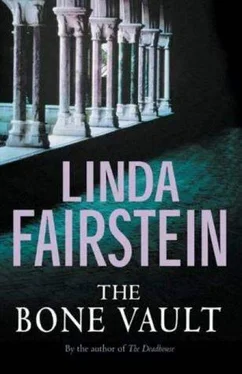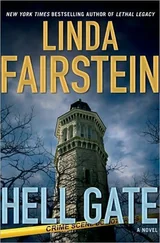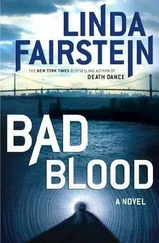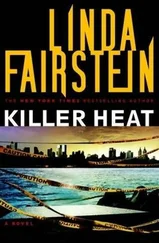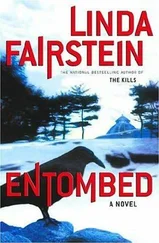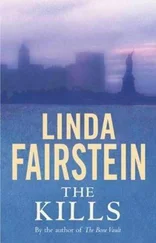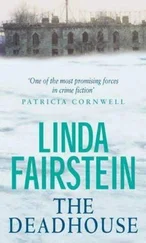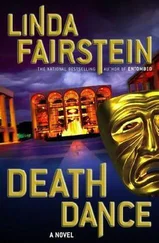“What did Harriet say?”
“I told her my concern. I described the changes in Katrina since the summer. How she had lost weight and become listless. That lately, she had become apathetic about her work, which was very uncharacteristic of her.”
It not only sounded like post-traumatic stress, but also like the beginning of an overlay of arsenic poisoning.
“I asked Harriet whether she thought Katrina should see a physician, whether there was something medically wrong that might be causing this deterioration. You haven’t told me how Katrina died, of course,” Bellinger said, looking at Mike, “so perhaps my secondguessing is all irrelevant.”
Mike didn’t offer any assistance. “What did she say?”
“Harriet? That she could handle this herself. That counseling like this was her specialty. She had only been seeing Katrina since late summer, so the differences were not as startling to her as they were to some of us who had known her before she was assaulted. But she led me to believe that she was the expert, so I left it alone. Harriet told me all the symptoms I mentioned were consistent with rape trauma syndrome.”
“Did you and Katrina continue to talk about it, too?”
“Not really. By the beginning of November, she was already hinting to me that she was thinking about going home, to Cape Town. Her father was there-”
“Do you have a telephone number for him?”
“It’s in the personnel folder here. I don’t think it will do you much good. She told me her father was in a nursing home. Early-onset Alzheimer’s, if I’m not mistaken. I told her I thought it was crazy for her to go back there, for two reasons.”
“What were they?”
“I thought she needed to get well before she went home. Brought out that stubborn streak she had. She got all fired up about the medical care in South Africa and how advanced it was. That if there was something psychological impeding her recovery, it would do her good to get out of this environment, where the rape occurred. And that if it was medical as I suspected-and she doubted that, by the way, because she placed such faith in Harriet-then the best doctors in the world were in Cape Town.”
“And your second reason for thinking she shouldn’t leave?”
“The work she was doing.”
“They don’t have tombs in Africa?” Mike asked. “They don’t have museums?”
“Of course they do. But nothing like her specialty. She had already applied for a job. I’d written a letter of recommendation, which you’ll also see in the file.”
“For what kind of position?”
“The McGregor Museum. It’s in Kimberley, South Africa.”
“They’ve got a medieval art department?” I asked.
“Botany. Archaeology. Cultural history. Zoology. Natural history. Science, not medieval art. They’re what you do at the McGregor. That was my point, Ms. Cooper. Katrina was such a promising student in this highly competitive field. But all of the medieval studies programs are limited to the European and American institutions. She was throwing away ten years of her education.”
“But it was her home, Mr. Bellinger.”
“Her mother was dead. Her father didn’t know her any longer. She’d gone to university in England, so her friends were scattered all over the world.That wasn’t home, in South Africa. She was beginning to make herself a decent life here.” Bellinger was pacing now and was getting more agitated as he spoke about his efforts to stop Katrina from leaving New York. “Anna Friedrichs and I were hoping to restore her health and well-being. I’d talked to Eve about letting her transfer her work to the main branch of the Met so she didn’t have to deal with coming through Fort Tryon Park every day.”
“Sounds like you wanted to keep her around,” Mike said.
“Very much so. I even suggested a leave of absence. Go home for the holidays. Visit her father. See that there was nothing left for her in Cape Town. Now I can only imagine the pressure she was experiencing if someone here was trying to kill her all that time.”
Bellinger hesitated, then looked across his desk to Mike and Mercer. “Are you going to tell me? Am I entitled to know how she died?”
“Poison, most probably.”
He pulled out his chair and sat down, throwing his head back and studying a gargoyle in the arch of the ceiling. The last thing I expected to hear him do was laugh.
“I hope to hell it wasn’t arsenic. I’ve got enough of it here to do in all of us.”
“Do you mean that Katrina Grooten worked with arsenic here at the Cloisters?”
Bellinger fidgeted now, swiveling in his chair as though he were looking for something north of the heavy traffic crawling across the George Washington Bridge.
“No, no, I can’t say that she did.”
“But a lot of the other staff members do?” Chapman asked.
He thought before answering. “I wouldn’t say very many. Four at the most. Those who work under my direct supervision. They’ll all tell youI’m the one who uses it most.”
“Why? In what form?”
“My particular scholarship is in the field of illustrated manuscripts.” He stood up and walked to some of the open volumes that had been moved to accommodate our gathering. “From the earliest monastic houses on, the production of books was an essential task the monks performed for the greater ecclesiastical community. Each of them had what was called a scriptorium, where scribes and illuminators copied classical texts. Here, in the building we call the Treasury, we’ve got a unique collection of these exquisite books.”
Bellinger picked one up and carried it back to us. “Certainly our most prized possession. Perhaps you know it. TheBelles Heures. ”
“Only from the museum catalog.”
“This one was described in the inventory of the Duke of Berry in 1413. These were made by the monks for the rich patrons and royal families, who were supposed to say their prayers at the same canonical hours that were observed in the monasteries-book of hours.”
The two pages he displayed were ornately decorated in gold leaf around the text of the prayers. There were stunning paintings in vibrant colors, and I studied the heavy pages before moving out of the way for Mike and Mercer.
“How has this survived in such good condition?” I asked.
“The books always suffered less damage than things like tapestries. They couldn’t be melted down into bullion, like jewelry or pieces of gold, so thieves and rogues didn’t perceive them to have very much value. It’s just that their colors fade over time, and we restore them here. That’s the work I like to do.”
“And the materials?”
“We try to imitate what was done in medieval times.” Bellinger pointed at parts of the elegant page. “Powdered gold for these elaborate drawings was made by grinding the actual metal with honey and mixing it with egg whites. Black came from a carbon-based ink. They made blue in a number of ways. The most expensive was actually ground from lapis lazuli, or indigo mixed with white lead-which is actually quite poisonous itself. And yellow, that’s where the orpiment comes in. The monks used saffron to produce a yellow pigment in the early days. But it wasn’t permanent.”
“What’s orpiment?”
“It’s an arsenic compound, Detective. Very widely used to give us a fine yellow color. You can see how effective it is right on that page you’re examining now. In our workshop downstairs, we’ve got more than enough to make someone quite ill.”
“Is it secured?”
“Do we keep it under lock and key? Of course not. Our little restoration area doesn’t get a lot of outside interest. It’s very intense labor and doesn’t excite much of the general public.”
Читать дальше
